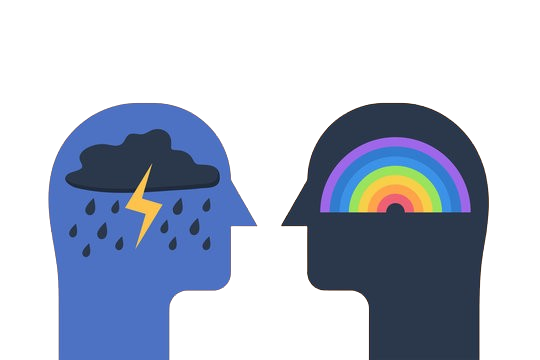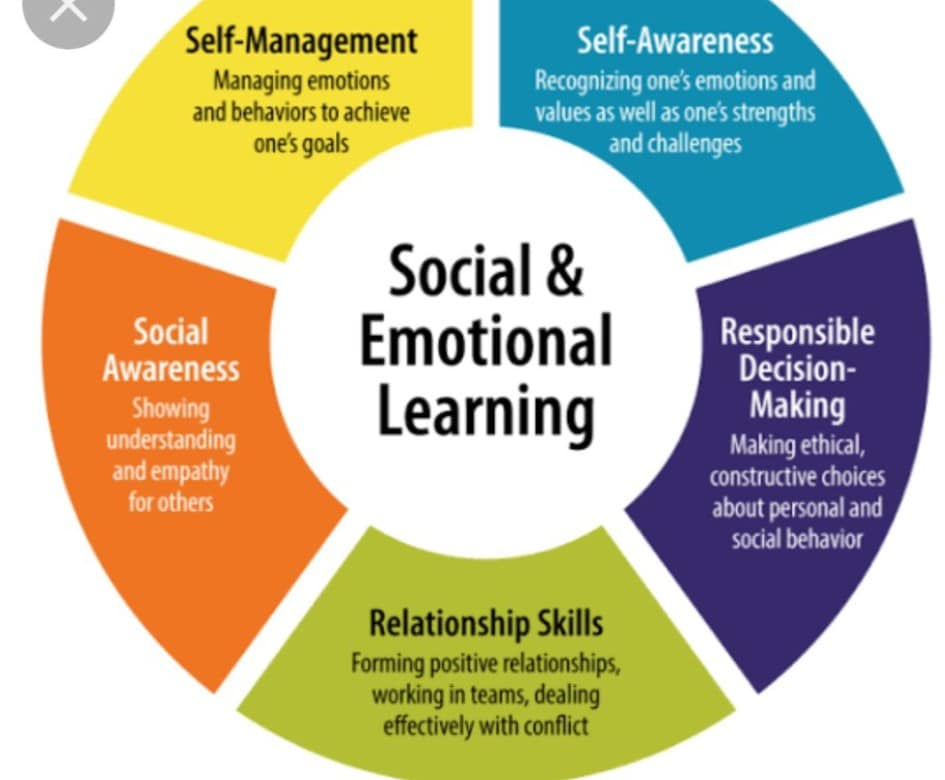Adolescent Sexual Behavior & Sexual Health
Adolescent Sexual Behavior & Sexual Health
17-Aug-2016
Adolescent sexual behavior is influenced by a complex set of interactions of biology and genetics, individual perceptions, personality characteristics, and sociocultural norms and values. This article addresses trends related to sexual and reproductive health of adolescents as well as clinical assessment and interventions designed to reduce sexual risk and promote sexual health of the adolescents.
Patterns and Trends in Adolescent Sexual Health
Sexual Behavior
Perhaps in no other single area has there been as dramatic a change in the past decade as in adolescent sexual and reproductive health.There has been a small but significant decline in the percentage of teens who report having had sexual intercourse today compared with a decade ago. Specifically, in 1988, 53% of teenage females and 60% of males reported ever having had sexual intercourse; a decade later it was 50% and 55%, respectively.<–> However, there has been an even more dramatic trend toward early initiation of sex. In 1988, 11% of adolescent females 14 years of age and younger reported having had sexual intercourse; a decade later it was 19%.
Although we tend to think of youths who have initiated intercourse as being “sexually active,” substantial data suggest otherwise. In fact, Terry and Manlove noted that in 1997, only 37% of females and 33% of males who reported ever having had sexual intercourse said that they had sex in the past 3 months. In 1995, the majority of sexually experienced high school teens (54% of males and 70% of females) had either no partners or one partner in the previous year.
Sexual Orientation
Children engage in sexual play with same-gender friends as a normative part of development. During adolescence, engaging in sexual activity with boys and girls may be a way of testing one’s own sexual feelings. Although sexual orientation is believed to be determined before adolescence, its expression may be postponed until early adulthood or indefinitely, making it difficult to estimate the prevalence of homosexuality and bisexuality among adolescents. Uncertainty about sexual orientation may diminish during the adolescent years, with corresponding increases in homosexual and heterosexual affiliation. Among adults, sexual orientation prevalence estimates vary with the operational definition of homosexuality. Using a definition that included both homosexual behaviors and attractions, Sell and colleagues estimated the prevalence of homosexuality nationwide to be about 20.8% among adult males and 17.8% among adult females.
In part due to the social stigma surrounding homosexuality and the lack of socially sanctioned ways to explore their sexuality, gay and lesbian adolescents typically experience a period of identity confusion in their process of sexual identity development. Some young people deal with this confusion through sexual encounters with multiple same- and opposite-gender partners or by engaging in other high-risk behaviors. For example, research suggests that adolescent girls who report being bisexual or lesbian have pregnancy rates that are as high or higher than their heterosexual female peers.
Contraception
Over the past 20 years, there has been a continuous rise in contraceptive use by America’s teenagers. Specifically, according to data from the National Survey of Family Growth, 48% of young people ages 15 to 19 years used any contraception at first intercourse in 1982. This rose to 76% by 1995. Most of the increase reflected a nearly threefold increase in condom use during that 13-year period.
Pregnancy
Birth rates among 15- to 19-year-olds decreased dramatically during the 1990s, from a high of 62.1 per 1,000 in 1991 to 49.6 per 1,000 in 1999, which is the lowest rate since records were first collected in 1940. The 1999 rate represents a 20% decline for the decade. When the trends in pregnancy rates are analyzed by age, the greatest decline was seen among the youngest teens (<15 y), in which there was a decrease of 24% compared with declines of 17% among 15- to 17-year-olds and 12% among 18- to 19-year-olds. There was a 29% reduction in births over the same period for those younger than 15 years, 21% for 15- to 17-year-olds, and 13% for those 18 to 19 years old. Among ethnic groups, the birth rates for African-American teens dropped most dramatically (26%) compared with whites (19%), Asian/Pacific Islanders (16%), and Native Americans (15%). Concurrent with this downward trend has been a decline in abortions among adolescents, from 37.6 per 1,000 adolescent women ages 15 to 19 years in 1991 to 29.2 per 1,000 in 1996. Darroch and Singh attribute 75% of the decline in adolescent pregnancy rates to improved contraceptive use, with the remaining 25% attributable to abstinence. Although other authors have reached similar conclusions, key influences in the decline of teen pregnancy remain a hotly debated topic.
Adolescent Sexual Health: What Is It? How Do We Promote It?
A key developmental task of adolescence is to become a sexually healthy adult. As clinicians, we can encourage development of sexual health among our adolescent patients by providing accurate information about sexuality, fostering responsible communication and decision-making skills, and offering guidance and support for young people to explore sexual attitudes and develop positive sexuality values. We also can encourage parents to communicate with their adolescent children in ways that promote sexual health and discourage risky sexual behavior. As members of individual communities and society at large, we can advocate for teenagers’ access to comprehensive sexuality education; affordable, sensitive, and confidential reproductive health-care services; and high-quality education and employment.
Adolescents should be encouraged to delay sexual activity until they are physically, cognitively, and emotionally ready for mature sexual relationships and their consequences. They should receive education about intimacy, sexual limit-setting, resistance to negative sexual pressures, benefits of abstinence, prevention of sexually transmitted infections (STIs), contraception, and delay of pregnancy. Because many adolescents are or will be sexually active, they should receive support and guidance in developing skills to evaluate their readiness for responsible sexual relationships.
Research has shown that adolescents get their sexual health information from a variety of sources. In a recent survey, 412 tenth graders were asked about their major sources of sexual information. Similar to patterns in previous research, friends were mentioned most often, with 63% of respondents noting that they obtained information related to sexual health from their friends. Siblings and cousins, the Internet, and magazines tied as the second most common source (31% of respondents); parents and clinics/health-care practitioners also were common sources of sexual information (each noted by 29% of respondents). However, when these teens were asked about their most valued sources of information on birth control and safer sex, their four top endorsements included friends, parents, siblings and cousins, and clinics/health-care practitioners. Because teens value adults as sources of information, it is important for parents and health-care practitioners to initiate conversations and share timely, accurate information, lest adolescents obtain information only from other, perhaps less reliable, sources.
Assessing Adolescents’ Level of Risk
Sexual risk behaviors, including early sexual debut, unprotected sexual intercourse, and multiple sexual partners, occur in a broader context provides guidelines for assessing adolescents’ risk for negative outcomes associated with risky sexual behaviors. The intensity of involvement in sexual risk behavior ranges from no sexual relationship to unprotected sexual intercourse with multiple partners and prostitution. Although risky sexual behavior does not always indicate a high-risk lifestyle, sexual risk behaviors often cluster with other risk behaviors, including substance use, violence involvement, and poor school performance. Adolescents who engage in sexual intercourse at young ages are at higher risk for outcomes that can compromise their health. Finally, sexually active teens who exhibit few positive or prosocial behaviors, such as involvement in organized activities at school or in the community, are at higher risk for outcomes such as early sexual activity and pregnancy during their teenage years.
Counseling Parents
Research clearly documents that parents have an influence on their adolescent children’s’ sexual behaviors. Although parents cannot determine whether their children have sex, use contraception, or become pregnant, their values, parenting practices, and quality of their relationships with their children can make a difference.
Ideally, practitioners should set aside time during routine health supervision visits to talk privately with parents about issues related to parenting adolescents. Grounded in research on parental influence, the National Campaign to Prevent Teen Pregnancy articulated “Ten Tips” along with a list of resources for parents and other adults who work with young people for talking about love, sex, and relationships. These tips provide a useful guide for talking with parents around promoting sexual health and reducing sexual risk of their adolescent children.
Be clear about your own sexual values and attitudes. Before communicating with teens about sex, love, and relationships, it is important to clarify your own values and attitudes around these topics as they relate to adolescence.
Talk early and often with your children about sex. Kids have lots of questions about sex, and they often say that they’d like to go to their parents for answers. Initiate an honest and respectful conversation, remembering that two-way conversations are often more effective than one-way lectures. Ask teens what they think and what they want to discuss so you can start at their point of interest. Research clearly shows that talking with children about sex does not encourage them to become sexually active.
Help your teenagers find options for their future that are more attractive than early pregnancy and parenthood. The chances that your children will delay sex and pregnancy are increased substantially if their futures appear bright. As parents, you can help your children reach toward the future by helping them set meaningful goals, talking to them about what it takes to make the future plans come true, and helping them reach their goals. In particular, by becoming involved in community service, adolescents learn job skills and come into contact with a group of committed and caring adults.
Let your teens know that you value education. Encourage your children to take school seriously and set high expectations for their school performance. Be attentive to your children’s progress in school; intervene early if they are not doing well. Get to know your children’s teachers, principals, coaches, and guidance counselors. Volunteer at school if possible.
Know what your kids are watching and reading and to what they are listening. The media is full of material sending the wrong messages: Sex rarely has meaning, unplanned pregnancy seldom happens, and few people having sex appear to be especially committed to each other. Is this consistent with your values? If not, it’s important to talk with your children about what the media portray and what you think about it. Encourage your children to think critically, asking them what they think about the programs they watch and the music to which they listen.
Supervise and monitor your children. Establish rules, curfews, and standards for behavior, preferably through a process of respectful family communication.
Know your children’s friends and their families. Friends have the substantial influence on each other, so help your children to become friends with kids whose families share your values. Welcome your children’s friends into your home and talk to them openly. Consider talking with parents of your children’s friends to establish common rules and expectations.
Discourage early, frequent, and steady dating. Group activities among teenagers are important and fun, but allowing teens to begin steady, one-on-one dating much before age 16 years can lead to trouble. Let your children know your expectations about dating throughout childhood or they may think that you just don’t like a particular person or invitation.
Build close, caring relationships with your children early in childhood. The previous tips work best when they occur in the context of caring, connected parent-child relationships. Strive for relationships that are warm, firm in discipline, rich in communication, and that emphasize mutual trust and respect.
Conclusion
Office-based interventions are most likely to contribute to a reduction of risks and promotion of sexual health among young people if they occur in concert with other efforts in schools, communities, and families. Kirby describes key characteristics of successful multilevel efforts to prevent pregnancy and promote sexual health of adolescents. Building skills in effective office-based interventions is worth the effort because although adolescents frequently appear to dismiss our guidance, they listen actively to what clinicians have to say. Whether such interactions facilitate an adolescent’s process of making behavior change depends on the accuracy of information provided and the clinician’s skills in connecting with and understanding a particular young person’s perspectives and readiness for change. Finally, because clinicians may be one of very few adult resources in the lives of some teens, they must be mindful of keeping “an open door” for ongoing conversation and support.
More Blog
Mental health needs to notice in Bangladesh
12-Sep-2024Like other countries Mental health is one of the warning issues in Bangladesh gradually. Though the immense consequences of this... read more
Happiness tips:
02-Apr-2022Happiness is also one of the important aspects of positive psychology and wellbeing. Do something you enjoy every day, e... read more
What is SEL?
31-Jan-2022Social-emotional learning, commonly referred to by its acronym, SEL, is a method of promoting holistic child development by teac... read more



